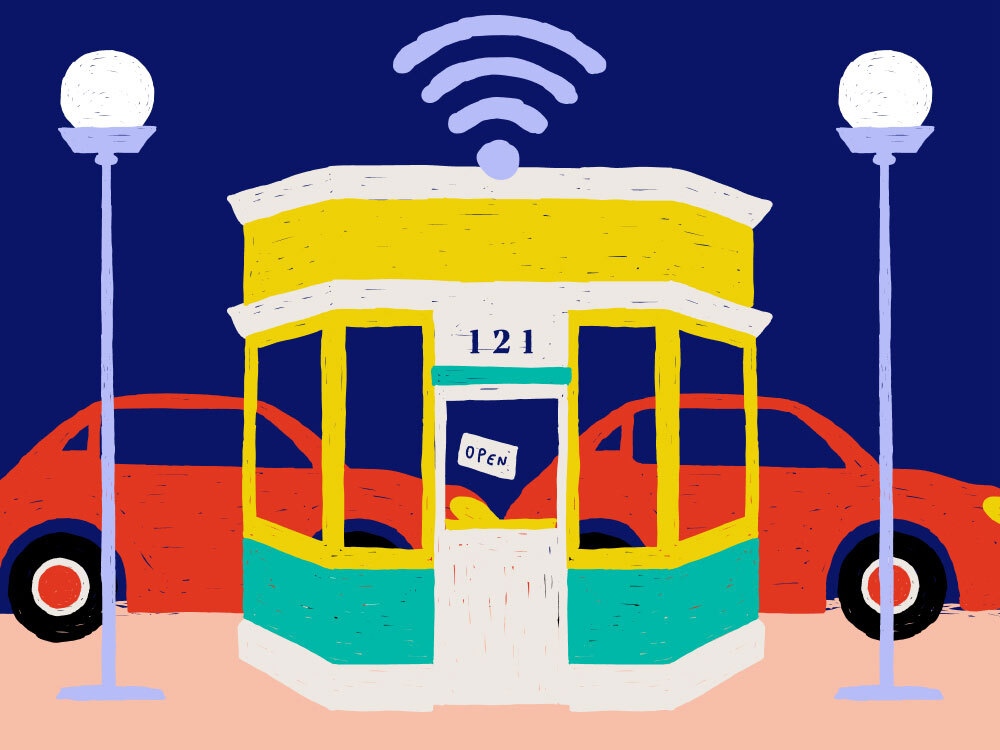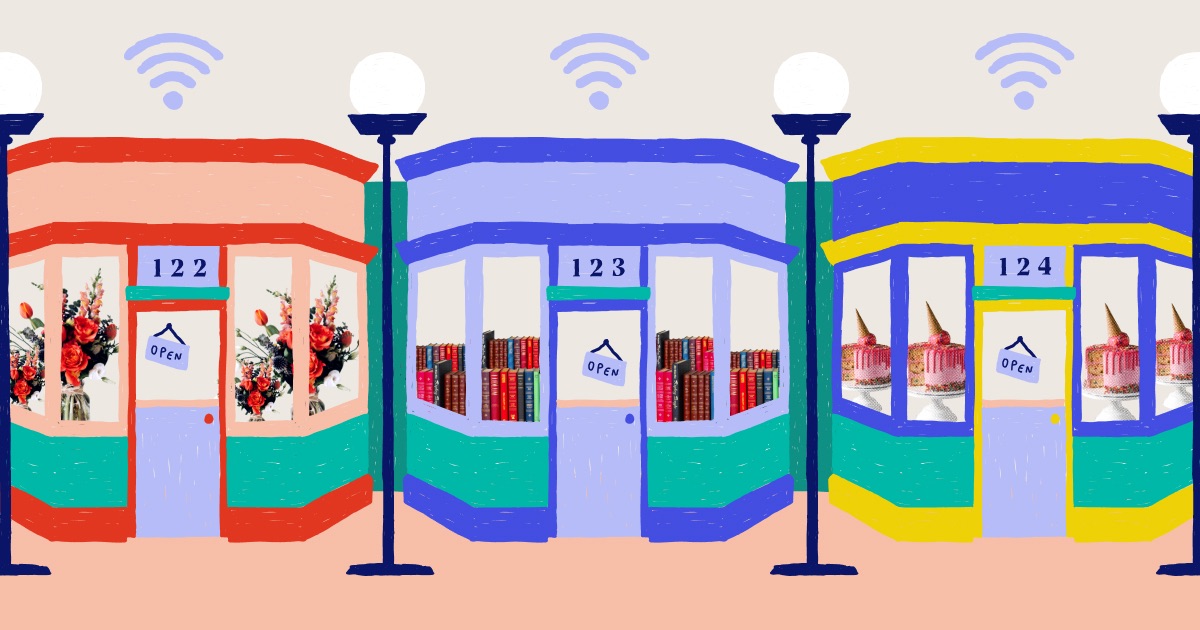What you sell is what you are. At least, that’s how things used to be. Sell flowers? You’re a florist. Sell paper? You’re a paper company. But in 2022, the rules have changed. Your brand is less tethered to your product or service because technology lives at the intersection of business and profit. Look around now, and you’ll see technology playing a critical part in the operations of businesses of every size and kind.
Today, every company, no matter what they do, is a tech company. When technology is so interwoven into every step of your business process, considering the technology you’re using (or should be using) becomes an essential part of planning for the future, setting revenue goals, and expanding whether your company is a traditional nine to five, a service-based business, or even a trade. If you look past the exterior, you’ll find that businesses are past the point of negotiating innovation. Those that want a future have to evolve and embrace technology, otherwise, they’ll be capping their potential before they even start building towards it.
Here are four reasons why every company is a tech company, even if it might not seem like it at first glance.
Technology serves a foundational purpose for every kind of business
Technology is the great equalizer between businesses. Whether you realize it or not, all companies rely on technology at the bare minimum for their day-to-day function.
A starting example is cybersecurity: at the most basic level, companies offer products and services to customers, and in that exchange, private information is shared. Cybersecurity is paramount for the protection of customers’ sensitive information. An online store, point-of-sale (POS) system, internet security, and antivirus software have become the technological foundation to any interaction with customers.
Another widespread example is bookkeeping. Just like how the days of the abacus are over, you’ll have a hard time finding a company today that doesn’t incorporate some kind of accounting and bookkeeping software for invoicing. Paying employees and partners and earning revenue don’t come without scheduling tools and reminders, and software that expedites the process to save you time and resources is a must-have.
It goes far beyond cybersecurity and bookkeeping, though. Webpages, customer relationship management (CRM) platforms, POS software, mobile apps — technological tools have become the backbone of business at large.
.jpg)
Technology has become essential for maxing efficiency
Regardless of whether you’re B2B or B2C, efficiency in delivering to your customers is critical when it comes to securing repeat business. Today, companies infuse an impressive amount of innovation to sell their products, and a cornerstone of this innovation is automation. When everyone’s automating, they’re also upending the traditional definition of a technology company.
The widespread use of AI across organizations
From supply chain management to logistics, accounting, marketing, and virtually every part of a business — whether small or large, companies rely on automation technology to make leaps and bounds in market. As of 2019, 37 per cent of organizations employ AI in their day-to-day operations, positioning the global AI market value well on track to hit $407 billion by 2027. Integrating information technology, IoT, machine learning, and other cloud computing services is every company’s best bet in accelerating business operations and doubly satisfying customer needs. But not only is the average local coffee shop or mail courier serving up new software, organizations alike are using data analysis to make better business decisions that satisfy customers and drive up revenue.
Using technology to take over manual tasks
When it comes to maximum efficiency, a company doesn’t have to be using advanced tools like AI to be utilizing technology. Simple tech like automated email campaign tools and social media scheduling software free up time that would otherwise be spent posting and pressing “send.”
A company’s use of digital platforms can also increase its ability to reach wider audiences more efficiently, generating brand awareness and organic traffic, and eventually, more leads that can be converted into actual customers. Sure beats door-knocking or sending out flyers.
Abandoning manual efforts for automated results is the fabric of fast-growing companies, whether you’re selling B2B SaaS, ecommerce, or direct to consumer. And with the demand for speedy operations and service at an all-time high, companies have no choice but to shorten their time to market by implementing automation tech.
Related: Here’s how automation saves you time and money.

The demand for shorter product lifecycles makes technology a necessity
Buyers want meaningful solutions that meet their needs, are readily accessible, and are up to par with modern standards. So while it used to be status quo for products to undergo a facelift or refresh every five years, products are now more frequently updated between 12 and 24 months to reflect the latest advancements and emerging technologies.
By this measure, companies must create efficiencies in their workflows to ensure they can get in front of customers at the time they’re most willing to accept a solution. This means cutting down on product lifecycles, sales cycles, and the length of the customer journey.
Various platforms that have become a staple tool for all companies (not just the tech industry), such as a CRM, can help companies qualify leads and reduce the time it takes for a prospect to buy — making those tech tools the ultimate win-win.
The lion’s share of the buyer’s market is reached through technology
When a company launches a hot new product to market, it’s not just about making it first out the door, but rather the opportunity to gain consumer confidence and market share before your competitors do. The necessity of meeting consumers where they are is essential. Where are they? On technology. According to Statista, there are 2.14 billion digital buyers in the world, and that number is only climbing. According to Qualtrics, 82 per cent of customers use mobile phones at some point in their purchasing journeys. Those buyers did over $4.2 trillion dollars of business in 2020.
Not only are those buyers starting their purchasing journeys online, but they’re leaning into technology to help them make their purchasing decisions. According to research by BrightLocal, over half of consumers check online reviews before making a purchase decision. Further, 88 per cent of those consumers trust online reviews as much as personal recommendations. These days, having an online presence is an essential part of selling your product or service.
See more: Top growth channel tactics right now.

Technology enables today’s expected level of customer service
Bad service is a dealbreaker. Whether your target audience is B2B or B2C, buyers expect that you’ll create a seamless experience that’s both positive and memorable.
Modernizations like a live chat feature, mobile app, or sequence of welcome emails upon subscription or sign-up are just a few examples of the personalized service consumers are used to today. No prospect has the patience to sit through a slow-loading website, wait days for a response to their inquiry, or jump through hoops to process a payment on outdated POS devices. It’s been found that consumers are consistently accessing digital support more frequently than in-person or over the phone support.
The cost of falling short with digital customer service
Failing to adapt to today’s technological landscape can cost companies trillions of dollars. In fact, Qualtrics found that digital customer experiences that don’t meet customer expectations cost businesses up to $4.7 trillion each year. Because this research shows that buyers aren’t differentiating between channels during their purchasing journeys, a seamless “omnichannel” experience from businesses is essential. Brands with the strongest omnichannel customer experiences retain an average of 89 per cent of their customers, in comparison to 33 per cent of companies with weak strategies. Keep in mind that B2B transactions are still performed by humans, so these insights don’t lose their importance when it comes to B2B buyers.
The DNA of businesses has changed forever
Thanks to ever-pressing globalization and undeniable economic catalysts like COVID-19, the world has redefined the boundaries of technology. What it means to be a tech company today isn’t the same as a decade ago, and with that, we’ve had to expand our perception and expectations of how businesses work.
The reality is technology is ever present. It’s layered into every aspect of our lives, work, and play. If you’re a business that sells cars, that’s not all that you’re good for these days. Cars use millions of lines of code, making manufacturers just as much a tech company as a company that sells SaaS.
A bank is no longer just that, but a fintech when it sells its financial products through digital interaction. And a restaurant that offers online delivery is a tech company, too.
Where companies like Apple and Microsoft once ran the show and headlined as the quintessential tech company, the world has since made room for other entrants like the modern coffee shop down the block or the agtech that sourced your farm-fresh meals.
Because today, every company is a tech company.









.jpg)

